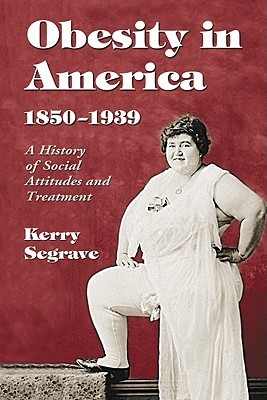
- We will send in 10–14 business days.
- Author: Kerry Segrave
- Publisher: McFarland and Company, Inc.
- ISBN-10: 0786441208
- ISBN-13: 9780786441204
- Format: 15 x 22.6 x 1.3 cm, minkšti viršeliai
- Language: English
- SAVE -10% with code: EXTRA
Reviews
Description
This is a study of obesity in America from 1850 to 1939, concentrating on how the condition was viewed, studied, and treated. It examines the images and stereotypes that were associated with fatness, the various remedies that were proposed for the condition, and the often bizarre theories used to explain it, including the idea that ordinary tap water was fattening. From about 1850 to 1879, obesity existed almost exclusively among the upper class, and it received very little medical attention. From 1880 to 1919, doctors, scientists, and other health professionals began to present a coherent theory of obesity. By 1920, the condition was recognized as a big enough health issue that various groups, ranging from private employers to public health officials, began developing some of the nation's first organized weight reduction programs.
EXTRA 10 % discount with code: EXTRA
The promotion ends in 23d.07:42:51
The discount code is valid when purchasing from 10 €. Discounts do not stack.
- Author: Kerry Segrave
- Publisher: McFarland and Company, Inc.
- ISBN-10: 0786441208
- ISBN-13: 9780786441204
- Format: 15 x 22.6 x 1.3 cm, minkšti viršeliai
- Language: English English
This is a study of obesity in America from 1850 to 1939, concentrating on how the condition was viewed, studied, and treated. It examines the images and stereotypes that were associated with fatness, the various remedies that were proposed for the condition, and the often bizarre theories used to explain it, including the idea that ordinary tap water was fattening. From about 1850 to 1879, obesity existed almost exclusively among the upper class, and it received very little medical attention. From 1880 to 1919, doctors, scientists, and other health professionals began to present a coherent theory of obesity. By 1920, the condition was recognized as a big enough health issue that various groups, ranging from private employers to public health officials, began developing some of the nation's first organized weight reduction programs.


Reviews